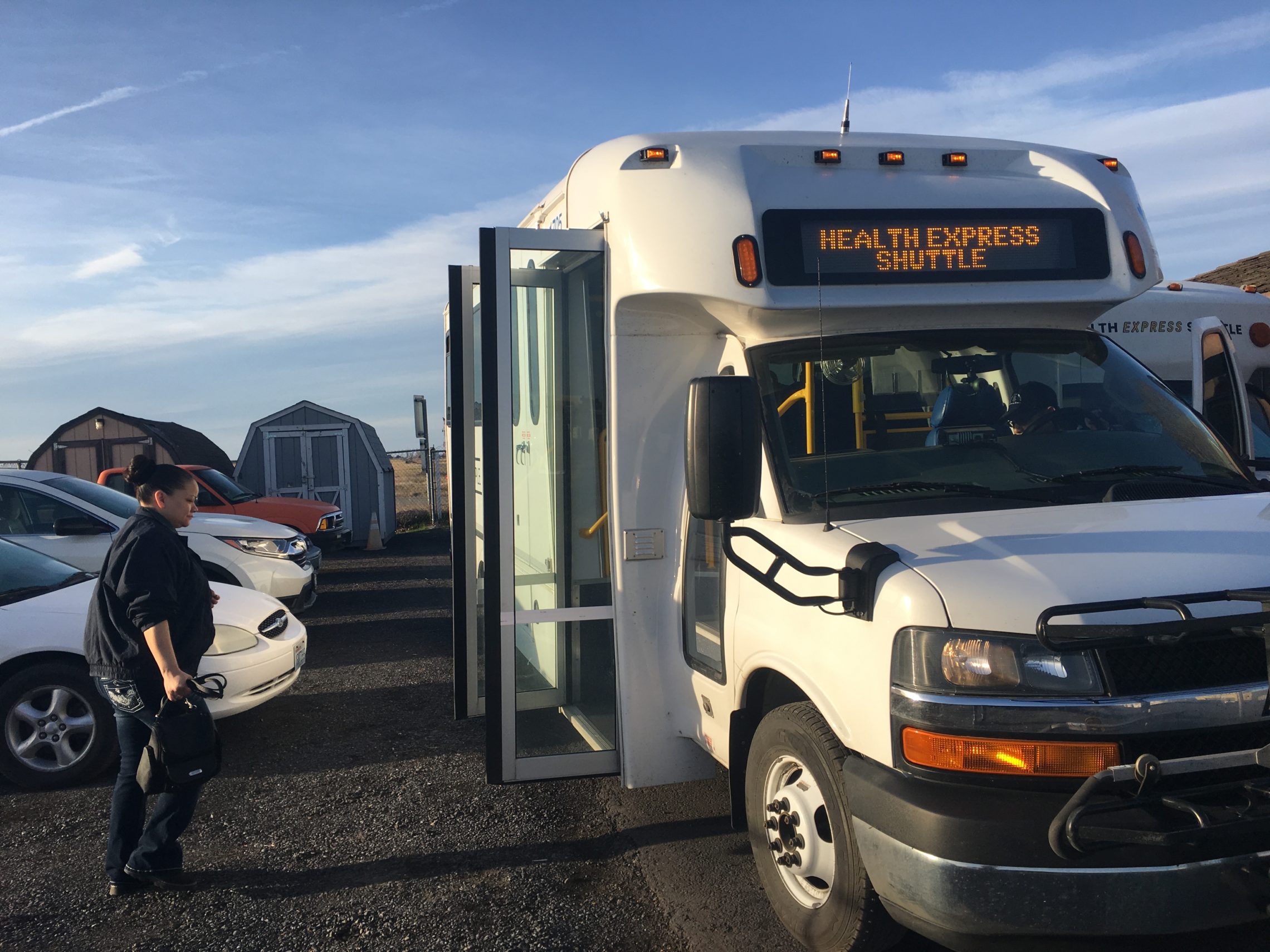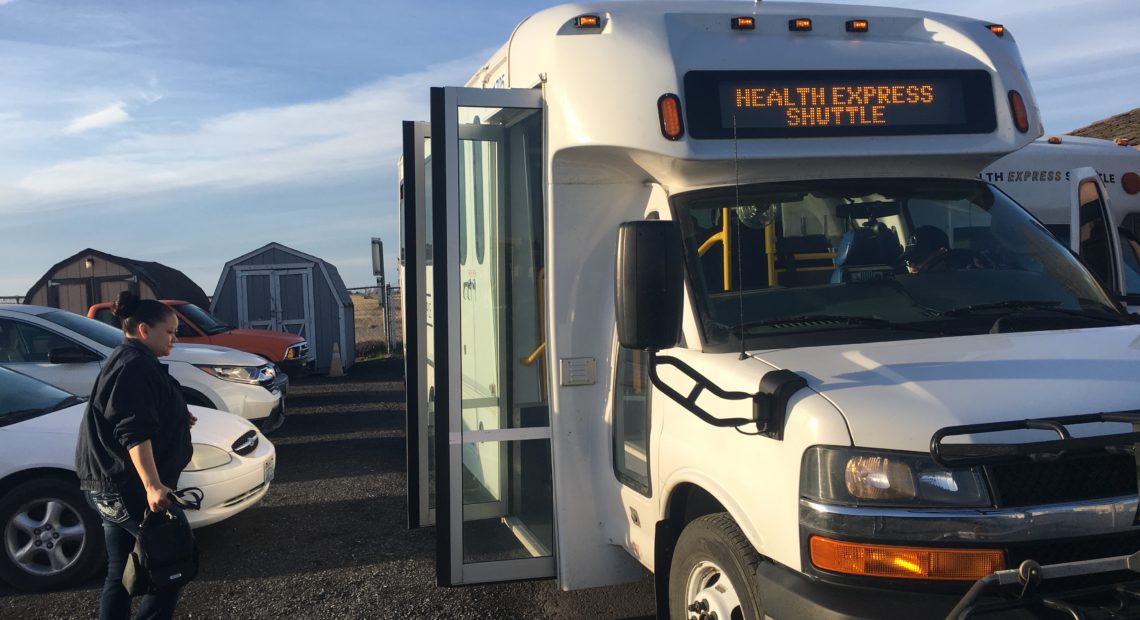
People For People: Connecting Dots Of Transportation Needs In Central And Eastern Washington
Listen
There are trains, ferries, buses, bikes and just about everything for people to get around. But that’s more so in cities.
In rural areas, transit options are often one: driving solo in cars.
In Central and Eastern Washington, people are still being left without wheels. But county transportation agencies and non-profits fill in the gaps.
Agencies like People for People.
THE HEALTH EXPRESS
The bus leaves Moses Lake at 7:45 sharp. It’s a little white one with 18 seats. It’ll get to Wenatchee in about two hours – stopping in Ephrata and Quincy at hospitals and senior homes. Between those stops, mostly cropland and a lot of sage brush.
All aboard the Health Express.
The bus is run by People for People. The non-profit operates in seven Central and Eastern Washington counties with ridership of about 1,000 trips a week. It connects the dots between several county and state transit agencies.
It also serves vulnerable populations: low-income folks, veterans, sick and disabled residents, students, and just those who don’t have a ride.
Adam Quintanilla is 74. He’s taking the Health Express today to his radiation appointment in Wenatchee.
“It’s hard for me to drive.” Quintanilla says. “I can hardly get around. Usually my wife takes me.”
Quintanilla relies on the Health Express for medical appointments. His car is currently out of commission. But using this service is still difficult in terms of time.
“Sometimes if their appointment went past that, they were stranded. That was it,” explains Rosenda Henley, the People for People mobility manager and travel coordinator.
She says that because the bus covers such a large area, it only comes twice a day from Moses Lake to Wenatchee. And that’s an improvement. The bus used to only go there and back once a day. But after community feedback, the organization added a second trip.
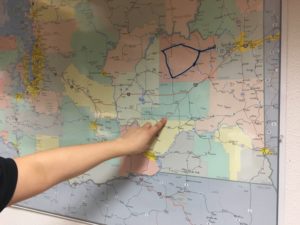
Rosenda Henley points to some of the service areas People for People covers with their bus routes. Ridership averages about a thousand trips a week. over seven counties. CREDIT: ESMY JIMENEZ/NWPB
That still means riders have to invest an entire day on an outing and plan around pick up times. That works for people who are retired or have flexible schedules.
But Henley explains that for parents, especially working mothers, the time crunch is harder because they need to be back to pick up kids at school.
People for People works with the larger Central and Eastern Washington community to improve schedules. But, of course, money is limited. The organization’s main funding comes from the Washington State Department of Transportation, and they have to be utilitarian about it, allocating the most funds and routes to places where the most people benefit.
Bob Walsh is People for People’s transportation manager for Adams, Lincoln and Grant counties. He thinks the younger generation is car averse. They don’t want the hassle of getting a car.
“Paying for insurance, getting a license. They’d rather just dial their phone, get a ride, or actually just go to the corner, catch a bus,” Walsh says.
That sounds like good news, right? If young people are more likely to avoid cars, then that’s good for transit.
Not exactly.
First, People for People technically can’t compete with county transit agencies, according to their contracts. People for People is a non-profit that aids current transportation and often sub-contracts with larger transit organizations. But it has to be “equivalent to, not better than” according to Walsh.
And, point two: Despite rural transportation services being available, a lot of times, people don’t know they exist.
Rosenda Henley, the transit coordinator, often gets feedback that they need to do more outreach. So she shows up at community fairs and town halls to spread the word. Still, it’s not a perfect way to advertise to over half a million people across seven counties.
So while King County and the Seattle area may have double the population, it’s easier to ditch the car for other options. In wide-open and more spread out Central and Eastern Washington, the hard work is often tracking down the resource, accessing it, and making it work despite any limitations.
“I gotta take care of myself. Every Wednesday I gotta go down there (to Wenatchee),” says Quintanilla, riding the Health Express.
For Quintanilla, that means riding the bus nearly 70 miles one way to his appointments, and hoping he catches the bus back home to Moses Lake in time.
Copyright Northwest Public Broadcasting 2018
Related Stories:

On Asian America: Past And Present Stories Of Living In The Rural Northwest
On Asian America examines the rise in anti-Asian sentiment and it’s history in the Northwest. This episode lookes at historically violent acts against Chinese workers in the rural Northwest from the Hell’s Canyon Massacre to mobs pushing out the Chinese in small towns. You’ll also hear from those of Asian descent who share their experiences living in rural areas and how they are treated. This special is a collaboration with Humanities Washington, KUOW and Spokane Public Radio.
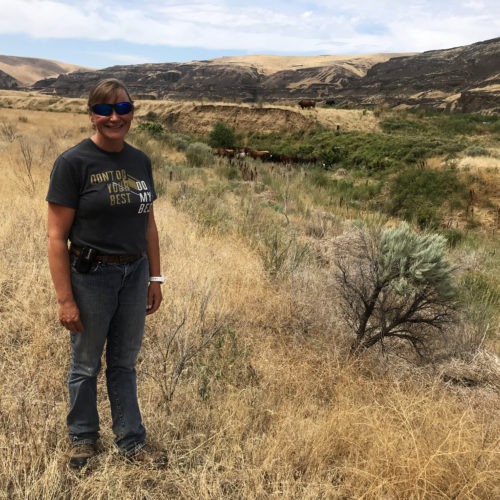
Washington Ranchers Push To Create Their Own Fire Fighting Teams In ‘No Man’s Lands’
There are no agencies assigned to fight fires on certain stretches of Washington rangeland. Ranchers want to form their own firefighting teams – something already happening in Oregon and Idaho.
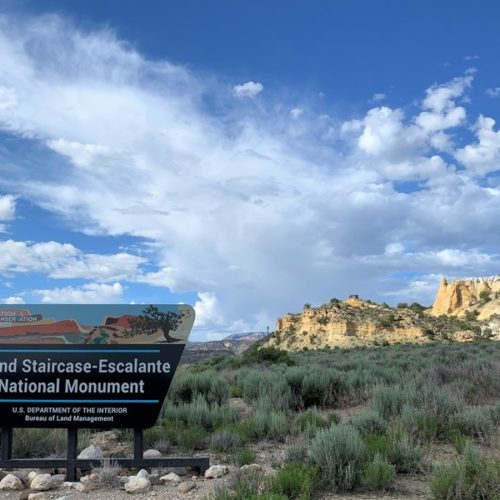
When Everybody Wants A Piece Of ‘God’s Country’
About 300 miles south of Salt Lake City, the Grand Staircase-Escalante National Monument is at the heart of some of the most remote terrain in the lower 48. Famous for its red rock canyons, arches and fossil beds, the rugged land is punctuated by sites like Death Ridge, Carcass Canyon and Hell’s Backbone Road.

